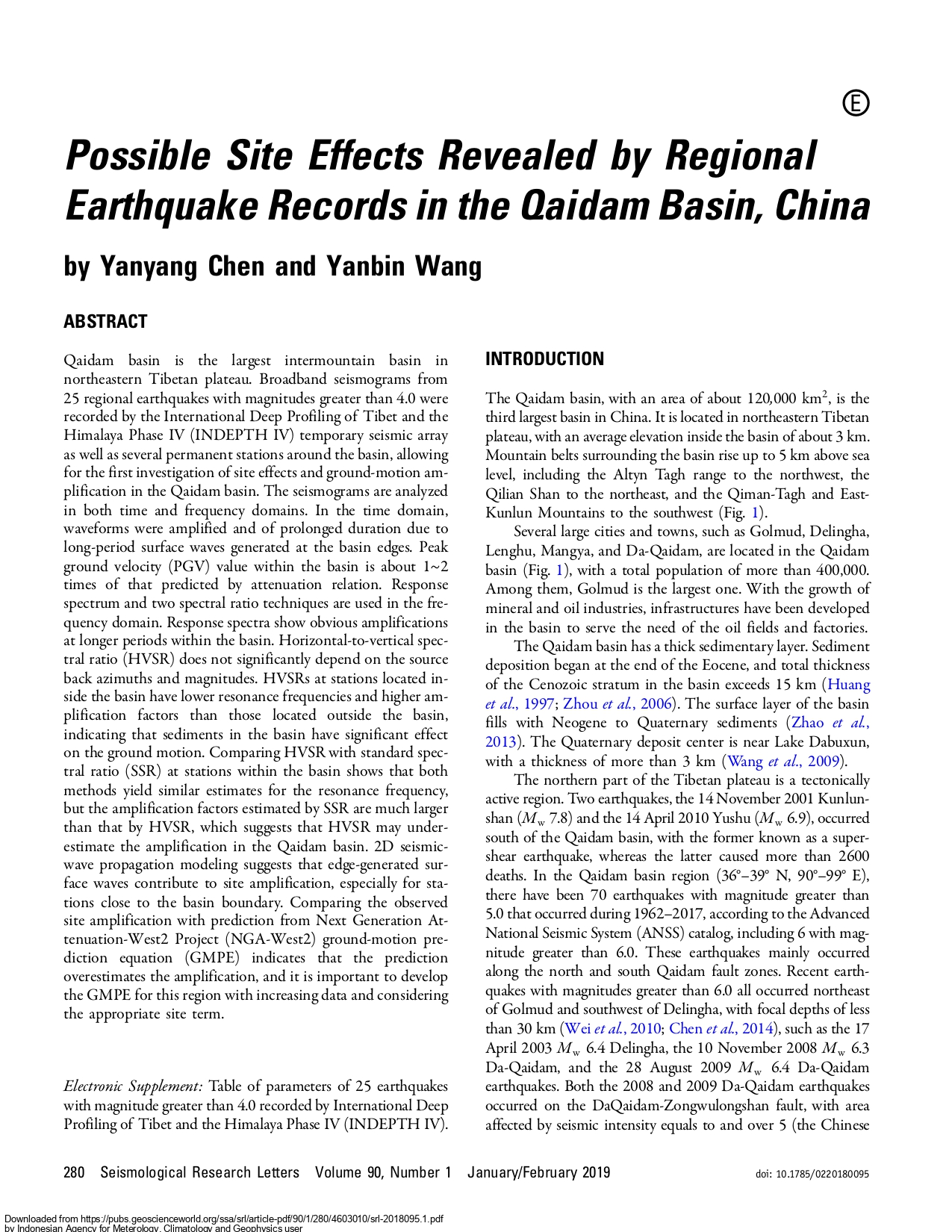Qaidam basin is the largest intermountain basin in northeastern Tibetan plateau. Broadband seismograms from 25 regional earthquakes with magnitudes greater than 4.0 were recorded by the International Deep Profiling of Tibet and the Himalaya Phase IV (INDEPTH IV) temporary seismic array as well as several permanent stations around the basin, allowing for the first investigation of site effects and ground-motion amplification in the Qaidam basin. The seismograms are analyzed in both time and frequency domains. In the time domain, waveforms were amplified and of prolonged duration due to long-period surface waves generated at the basin edges. Peak ground velocity (PGV) value within the basin is about 1~2 times of that predicted by attenuation relation. Response spectrum and two spectral ratio techniques are used in the frequency domain. Response spectra show obvious amplifications at longer periods within the basin. Horizontal-to-vertical spectral ratio (HVSR) does not significantly depend on the source back azimuths and magnitudes. HVSRs at stations located inside the basin have lower resonance frequencies and higher amplification factors than those located outside the basin, indicating that sediments in the basin have significant effect on the ground motion. Comparing HVSR with standard spectral ratio (SSR) at stations within the basin shows that both methods yield similar estimates for the resonance frequency, but the amplification factors estimated by SSR are much larger than that by HVSR, which suggests that HVSR may underestimate the amplification in the Qaidam basin. 2D seismicwave propagation modeling suggests that edge-generated surface waves contribute to site amplification, especially for stations close to the basin boundary. Comparing the observed site amplification with prediction from Next Generation Attenuation-West2 Project (NGA-West2) ground-motion prediction equation (GMPE) indicates that the prediction overestimates the amplification, and it is important to develop the GMPE for this region with increasing data and considering the appropriate site term.
5
Possible Site Effects Revealed by Regional Earthquake Records in the Qaidam Basin, China
Yanyang Chen and Yanbin Wang
Penerbit :
Seismological Research Letters
Tahun :
2019
epaper
Geofisika
-
No Scan-
-
No Klasifikasi551.22
-
ISBN-
-
ISSN-
-
No Registrasi-
-
Lokasi TerbitUnited States
-
Jumlah Hal14
-
Label-
-
Versi DigitalTIDAK
-
Versi FisikTIDAK
-
Lokasi Rak Buku Fisik//
-
Jumlah Exemplar Fisik Tersedia-





